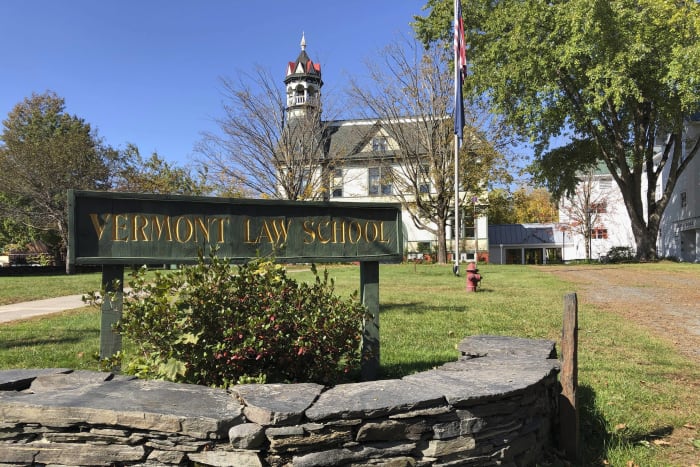A federal appeals court in New York is reviewing whether a Vermont law school modified two large murals when it hid them behind a wall of plaques against the artist’s wishes after they were deemed racially offensive by some in the school community.
Artist Sam Kerson created the colorful murals titled “Vermont, The Underground Railroad” and “Vermont and the Fugitive Slave” in 1993 on two walls in a building of the private Vermont Law School, now the Vermont Law and Graduate School in South Royalton is called. Years later, in 2020, the school said it would paint them over. But when Kerson disagreed, it said it would cover them with acoustic tiles. The school gave Kerson the option to remove the murals, but he said he couldn’t do it without damaging them.
When Kerson, who lives in Quebec, sued in federal court in Vermont, the school said in a court filing that “the depictions of African Americans strike some viewers as caricatured and offensive, and the mural has become a source of discord and distraction.”
Kerson lost his lawsuit in US District Court in Vermont. He appealed, and the US Second Circuit Court of Circuits heard the case on Friday.
Kerson’s attorney again argued that the artwork was protected under the federal Visual Artists’ Rights Act, which was enacted “to protect artists from alterations and destruction that harm their honor or reputation,” Steven Hyman said.
He said covering the artwork to prevent people from seeing it was a modification and Kerson “must suffer the outrage and humiliation of having a plaque placed over his art”.
However, school attorney Justin Barnard argued that covering the artwork with a wooden frame that does not touch the painting and is attached to the wall is not a modification.
“Modification implies that something is left, it’s a modified form,” Barnard told the judges. He also said that hiding the artwork is not destruction.
“There is a unique damage felt when you destroy something and remove it from the face of the earth. We don’t talk about that here,” he said. “We are simply talking about the right of a private institution or individual to remove a work from the exhibition.”
When asked by the jury, Barnard said it was the school’s intention to leave the wall standing for at least the rest of the artist’s life.
Copyright 2023 The Associated Press. All rights reserved. This material may not be published, broadcast, transcribed or redistributed without permission.





